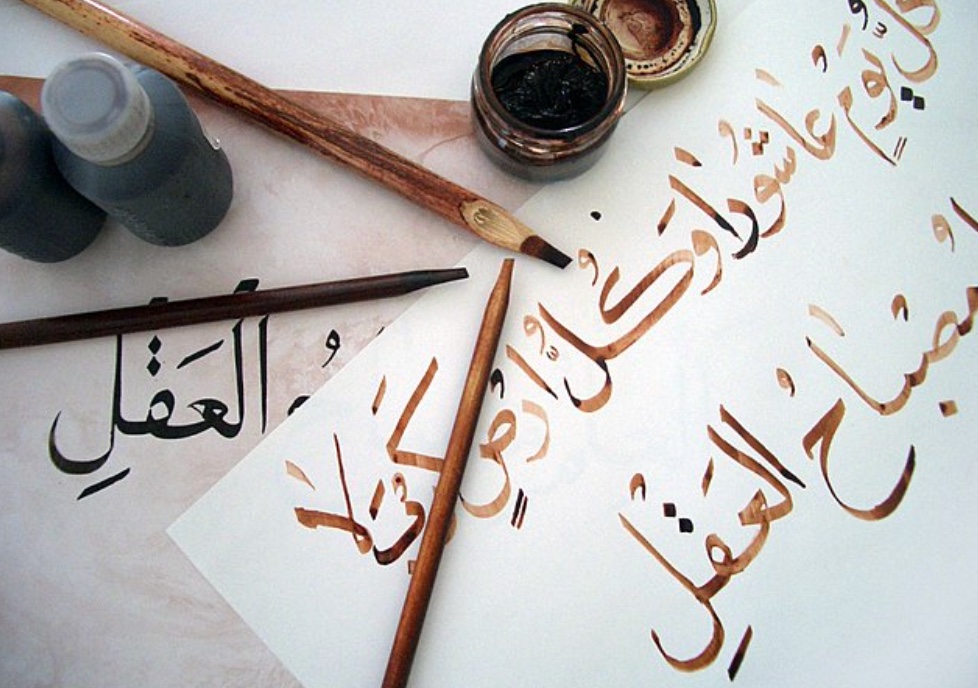Impact of Arab Culture in Language, Art, and Science

By: Fedal Hanoun / Arab America Contributing Writer
Rich and varied, Arab culture has had a lasting impression on the world, impacting facets of daily life well beyond the Arab country’s boundaries. Arab culture has influenced a worldwide legacy through language, art, trade, and science, adding to a collective history of creative and intellectual accomplishments. These contributions, which highlight the enduring legacy of Arab civilization, have resonance from the Golden Age of Islam to the present day.
Language: Arabic’s Global Presence
Arabic, a language renowned for its intricate structure and poetic cadence, has been essential to the evolution of language throughout the world. In addition to being the official language of more than 20 nations, Arabic is one of the six official languages of the UN. Arabic had an impact on various languages across time, particularly during the Islamic Golden Age, when it was the primary language of philosophy, science, and scholarship. Arabic has a long history in academia, as evidenced by the terms “algebra,” “algorithm,” and “zenith,” which are borrowed from Arabic and used in mathematics, physics, and astronomy.
The languages of the former Islamic Empire, such as Persian, Urdu, Turkish, and Swahili, also bear the impact of Arabic. Arabic words also made their way into the lexicon of European languages through trade, conquest, and cultural interchange. Words with Arabic roots, such as “sugar,” “cotton,” and “saffron,” are even used in English. Arabic’s global reach serves as an example of how language can bridge cultural divides by bringing disparate nations together via common vocabulary and concepts.

Art: Influences and Contributions to Aesthetics
Arab architecture, calligraphy, and elaborate patterns have impacted visual aesthetics all throughout the world. The focus on geometry, symmetry, and aniconism—the avoidance of human and animal figures—that characterize Islamic art, a significant manifestation of Arab culture, produces captivating patterns that frequently represent the boundless character of God. From India’s Taj Mahal to Spain’s Alhambra, this distinctive art form has influenced artistic traditions beyond borders.
Arabic calligraphy has also become more and more popular throughout the world. Arabic calligraphy is an art form that uses stylized characters to express beauty and meaning; it is more than just writing. The fluidity of Arabic writing has served as an inspiration to artists all around the world, and calligraphic art is now used in street art, graphic design, and modern fashion.
Through trading networks, Arab contributions to ornamental arts—such as glassware, ceramics, and textiles—also spread, bringing elaborate patterns and vivid hues to Europe and Asia. Techniques developed or refined in the Arab world, including glassblowing, metallurgy, and tile-making, influenced Western art and design and reflected the cross-cultural interaction promoted by trade and diplomacy.
Science: A Tradition of Ingenuity and Exploration
Particularly during the Islamic Golden Age (8th to 14th century), when astronomy, chemistry, mathematics, and medicine saw rapid breakthroughs, Arab civilization made revolutionary contributions to philosophy and science. By translating and extending Greek, Roman, Indian, and Persian writings, Arab academics expanded on the knowledge of earlier civilizations. By doing this, they established a body of knowledge that would subsequently impact the European Renaissance.
Comprehensive medical works, including The Canon of Medicine, which was used as a standard reference in Europe and the Middle East for centuries, were written by individuals such as Ibn Sina (Avicenna). Arab doctors’ surgical methods, pharmacology, and patient care improved healthcare and had an impact on medical schools and hospitals around the world.
By making exact astronomical observations, Arab astronomers created precise star charts and models that enhanced navigation. They questioned accepted notions about the cosmos and determined the Earth’s diameter with remarkable accuracy. Arab scientific achievements are indicative of a tradition of inventiveness and intellectual curiosity that has enhanced knowledge and comprehension throughout the world.
The Influence of Arab Culture on the Present
Arab culture still has an impact on many facets of modern life, including language, cuisine, art, and technology. One illustration of how cultural interaction continues to influence preferences and customs is the widespread admiration for Arab food, with its abundance of spices and flavors. Furthermore, modern Arab authors, filmmakers, and artists are becoming well-known throughout the world, bringing Arab viewpoints and narratives to a worldwide audience.
Furthermore, the global reach of Arab culture is growing as internet platforms make it easier for people to interact across cultural boundaries; Arabic pop music, literature, and fashion are all having an increasing impact on international trends. Arab culture continues to unite people through festivals, social media, and partnerships, encouraging a new generation to value and commemorate its heritage.
A Durable Heritage
The Arab world has a rich cultural legacy that has impacted nations well beyond their boundaries, as seen by its contributions to language, art, trade, and science. Arab culture is ingrained in the fabric of world civilization, from the language we use to the works of art we appreciate and the scientific discoveries that influence contemporary life. We can better understand the interdependence of human history and the ways that many cultures enhance our planet by investigating and honoring these contributions. Arab culture’s lasting influence serves as a reminder that cross-cultural interaction promotes creativity, comprehension, and solidarity—values that will continue to influence our shared future.
Check out our Blog here.









